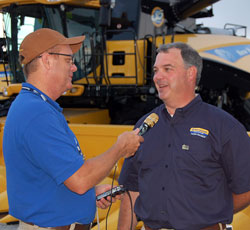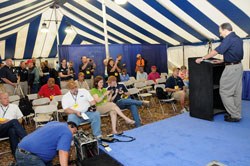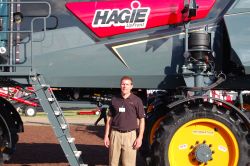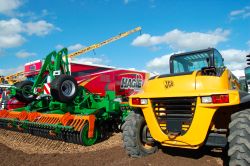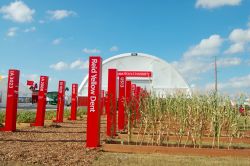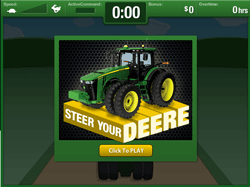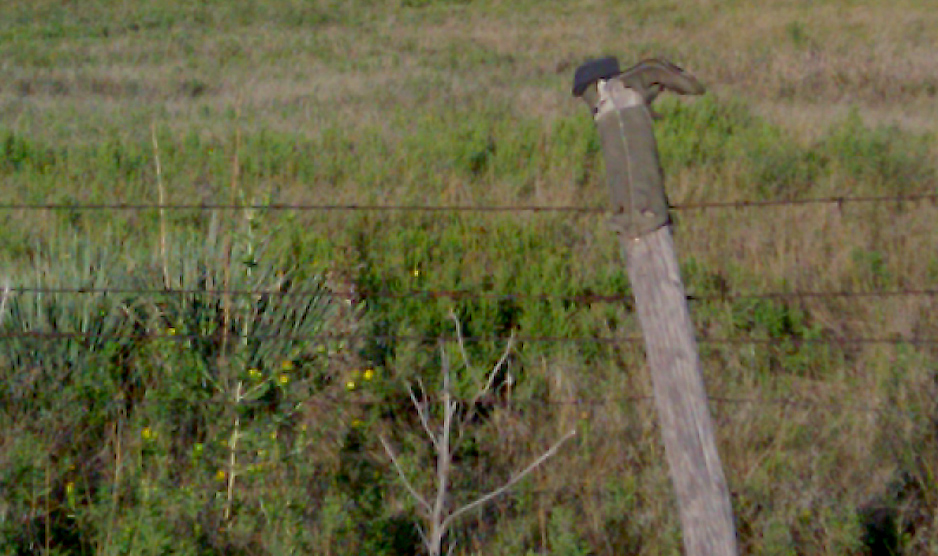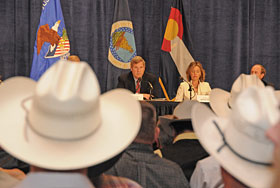 Friday’s joint USDA/DOJ public workshop was a marathon with potentially over 2,000 people participating. You can follow some of what happened in my archived CoverItLive stream and the press conference featuring Sec. Vilsack and AG Eric Holder. For those of you who couldn’t attend, couldn’t listen to the live stream or need the audio for your reports or broadcasts I’m posting the 4 main panel sessions for you. I’m including a list of the participants of each too.
Friday’s joint USDA/DOJ public workshop was a marathon with potentially over 2,000 people participating. You can follow some of what happened in my archived CoverItLive stream and the press conference featuring Sec. Vilsack and AG Eric Holder. For those of you who couldn’t attend, couldn’t listen to the live stream or need the audio for your reports or broadcasts I’m posting the 4 main panel sessions for you. I’m including a list of the participants of each too.
Keynote Roundtable Discussion Keynote Roundtable Discussion
Eric Holder, Attorney General, U.S. Department of Justice
Tom Vilsack, Secretary of Agriculture, U.S. Department of Agriculture
Christine Varney, Assistant Attorney General, Antitrust Division, U.S. Department of Justice
Betsy Markey, Congresswoman, U.S. House of Representatives
Bill Ritter, Jr., Governor, state of Colorado
John Suthers, Attorney General, state of Colorado
Steve Bullock, Attorney General, state of Montana
John Stulp, Commissioner of Agriculture, state of Colorado
Producer/Feeder Presentation of Issues Producer/Feeder Presentation
This panel will be an opportunity to hear first-hand from producers or feeders as they share their experiences and perspectives on the industry.
Moderators:
Tom Vilsack, Secretary of Agriculture, U.S. Department of Agriculture
Christine Varney, Assistant Attorney General, Antitrust Division, U.S. Department of Justice
Panelists:
Mike Harper, sheep producer, Eaton, Colorado
Dr. Taylor Haynes, rancher, Cheyenne, Wyoming
Robbie LeValley, rancher, Hotchkiss, Colorado
Harry Livermont, rancher, Interior, South Dakota
Chris Petersen, hog farmer, Clear Lake, Iowa
Allen Sents, feedlot owner, Marquette, Kansas
Alden Zuhlke, rancher, Brunswick, Nebraska
Panel I – Trends in the Livestock Industry Trends In Livestock Industry
This panel will discuss trends in the livestock industry, including issues associated with contracting, price transparency and the effects of concentration.
Moderator:
Philip Weiser, Deputy Assistant Attorney General, Antitrust Division, U.S. Department of Justice
Panelists:
Jerry Bohn, general manager, Pratt Feeders, Pratt, Kansas
Libby Cook, co-founder, Wild Oats Markets and Sunflower Farmers Markets
Mark Greenwood, vice president, commercial lending, AgStar Financial Services
Bill Heffernan, professor emeritus of rural sociology, University of Missouri
Mark Lauritsen, international vice president, director food processing, packing and manufacturing division, United Food and Commercial Workers International Union
Gilles Stockton, rancher, Range, Montana
Armando Valdez, rancher, La Jara, Colorado
Clem Ward, professor and extension economist, Oklahoma State University
Panel II – Market Structure Market Structure
This panel will include a variety of market participants who will discuss market structure issues in the livestock industry.
Moderator:
James MacDonald, Chief, Agricultural Structure and Productivity Branch, Economic Research Service, U.S. Department of Agriculture
Panelists:
Bruce Cobb, general manager, Consolidated Beef Producers
David Domina, attorney, Domina Law Group
Mark Dopp, attorney, American Meat Institute
James Herring, president and chief executive officer, Friona Industries
Robert Mack, cattle producer/feeder, Watertown, South Dakota
Bob Miller, rancher, Okmulgee, Oklahoma
William Rishel, Richel Angus, Platt, Nebraska.
Charlie Rogers, owner/general manager, Clovis Livestock Auction
USDA/DOJ Livestock Competition Workshop and Forums Photo Album
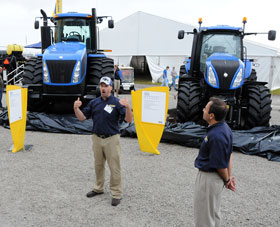 New Holland unveiled their new T8 and T9 Tractors today at the Farm Progress Show. Prior to the unveiling the company held a press conference. I’ve got the audio for you below. The rain miraculously stopped just as it was time for the outdoor unveiling. What timing!
New Holland unveiled their new T8 and T9 Tractors today at the Farm Progress Show. Prior to the unveiling the company held a press conference. I’ve got the audio for you below. The rain miraculously stopped just as it was time for the outdoor unveiling. What timing! and
and 

